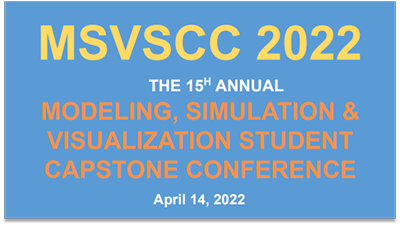Publication Date
2022
Conference Title
Modeling, Simulation and Visualization Student Capstone Conference 2022
Conference Track
Virtual Environments
Document Type
Paper
Abstract
Many autonomous vehicles are still in the development phase due to limited research and testing and will take a considerable amount of time to further develop before they are ready for public release. The main objective of this study is to introduce a human-in-the-loop simulation framework for supporting autonomous vehicle research. Our proposed simulation framework aims to facilitate AV assessment by providing a safer and more efficient way. Functionally, it is focused on the understanding of AVs’ operations in the presence of pedestrian users. The developed simulation framework allows a human pedestrian avatar to be integrated into the high-fidelity 3D virtual environment and interact with simulated autonomous vehicles via standard keyboard input methods or virtual reality (VR) methods. This enables safer pedestrian-AV integration research and testing, and the ability to implement a series of risky edge-case scenarios in less time and cost than would be feasible in a real-world setting.
Keywords:
Human-in-the-loop, 3D map modeling, Simulation, Autonomous vehicle, Pedestrians, Virtual reality
Start Date
4-14-2022
End Date
4-14-2022
Recommended Citation
di Battista, John; Johnston, Christian; Randall, Valerie; and Shanahan, Jackson, "Engaging Human-in-the-Loop for Autonomous Vehicle Simulation" (2022). Modeling, Simulation and Visualization Student Capstone Conference. 1. DOI: 10.25776/re6t-6g37 https://digitalcommons.odu.edu/msvcapstone/2022/virtualenvironments/1
DOI
10.25776/re6t-6g37
Included in
Engaging Human-in-the-Loop for Autonomous Vehicle Simulation
Many autonomous vehicles are still in the development phase due to limited research and testing and will take a considerable amount of time to further develop before they are ready for public release. The main objective of this study is to introduce a human-in-the-loop simulation framework for supporting autonomous vehicle research. Our proposed simulation framework aims to facilitate AV assessment by providing a safer and more efficient way. Functionally, it is focused on the understanding of AVs’ operations in the presence of pedestrian users. The developed simulation framework allows a human pedestrian avatar to be integrated into the high-fidelity 3D virtual environment and interact with simulated autonomous vehicles via standard keyboard input methods or virtual reality (VR) methods. This enables safer pedestrian-AV integration research and testing, and the ability to implement a series of risky edge-case scenarios in less time and cost than would be feasible in a real-world setting.


